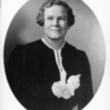Flags over America: a star-spangled story
Description
More Details
Also in this Series
Published Reviews
Booklist Review
Harness offers a short, illustrated history of America's flags from the years leading up to the Revolution until the end of the War of 1812. On a map representing North America in 1763, the British flag flies over its 13 colonies, but soon the colonists are flying their own rebellious flags on liberty poles. Besides summarizing historical events, the text mentions the disputed claims over who designed and sewed the first American flag. Also covered are the creation of the flag flown at Fort McHenry in 1814 and Frances Scott Key's writing of The Star-Spangled Banner. Marching quickly through decades of early American history, the text offers some memorable moments without a great deal of context, and primary-grade students may need help along the way. The full-page and spot illustrations are colorful, detailed, and often dramatic. A brief, upbeat introduction to early American flags.--Phelan, Carolyn Copyright 2014 Booklist
School Library Journal Review
Gr 2-5-Prolific American history writer Harness stitches together information about flags as symbols of group unity with an extensive selection of the regional and national standards that defined the United States in its infancy and beyond. The opening pages offer examples of historical emblems, ranging from the colors hoisted on a Phoenician merchant ship to the flags representing imperial powers in the Age of Exploration. Turning to the 18th century, Harness narrows the story's focus to the American Revolution, exploring a variety of designs that colonists displayed during the war. Her account of the conflict and the following War of 1812 highlights the impact of a variety of evocative symbols-toppled statues, colored uniforms-but flags dominate the majority of the detailed, almost textbooklike watercolor and colored pencil illustrations. A few awkward phrases land heavily in an otherwise sprightly text, but Harness does educators a service by mentioning-but not validating-a couple of popular, unsubstantiated flag-related legends she says inhabit a "cloud of history-mystery." Unfortunately, the book's design disrupts the narrative flow on several occasions, particularly a full spread of 10 annotated Revolutionary-era flags that appears in the middle of a section on the Continental Congress and feels like misplaced (though informative) back matter. For those who can overlook the clunky layout and occasional textual thuds, this title is an innovative take on the power and purpose of symbols, replete with early American history and charming details.-Robbin E. Friedman, Chappaqua Library, NY (c) Copyright 2014. Library Journals LLC, a wholly owned subsidiary of Media Source, Inc. No redistribution permitted.
Booklist Reviews
Harness offers a short, illustrated history of America's flags from the years leading up to the Revolution until the end of the War of 1812. On a map representing North America in 1763, the British flag flies over its 13 colonies, but soon the colonists are flying their own rebellious flags on liberty poles. Besides summarizing historical events, the text mentions the disputed claims over who designed and sewed the first American flag. Also covered are the creation of the flag flown at Fort McHenry in 1814 and Frances Scott Key's writing of "The Star-Spangled Banner." Marching quickly through decades of early American history, the text offers some memorable moments without a great deal of context, and primary-grade students may need help along the way. The full-page and spot illustrations are colorful, detailed, and often dramatic. A brief, upbeat introduction to early American flags. Copyright 2014 Booklist Reviews.
School Library Journal Reviews
Gr 2–5—Prolific American history writer Harness stitches together information about flags as symbols of group unity with an extensive selection of the regional and national standards that defined the United States in its infancy and beyond. The opening pages offer examples of historical emblems, ranging from the colors hoisted on a Phoenician merchant ship to the flags representing imperial powers in the Age of Exploration. Turning to the 18th century, Harness narrows the story's focus to the American Revolution, exploring a variety of designs that colonists displayed during the war. Her account of the conflict and the following War of 1812 highlights the impact of a variety of evocative symbols—toppled statues, colored uniforms—but flags dominate the majority of the detailed, almost textbooklike watercolor and colored pencil illustrations. A few awkward phrases land heavily in an otherwise sprightly text, but Harness does educators a service by mentioning—but not validating—a couple of popular, unsubstantiated flag-related legends she says inhabit a "cloud of history-mystery." Unfortunately, the book's design disrupts the narrative flow on several occasions, particularly a full spread of 10 annotated Revolutionary-era flags that appears in the middle of a section on the Continental Congress and feels like misplaced (though informative) back matter. For those who can overlook the clunky layout and occasional textual thuds, this title is an innovative take on the power and purpose of symbols, replete with early American history and charming details.—Robbin E. Friedman, Chappaqua Library, NY
[Page 130]. (c) Copyright 2014. Library Journals LLC, a wholly owned subsidiary of Media Source, Inc. No redistribution permitted.
























